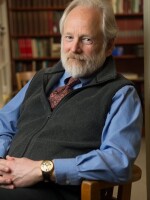When I first visited Georgian Bay, some thirty years ago, canoes were abundant. It’s not just that they were Canada’s iconic means of transport - evoking the First Nations, explorers, and fur trade voyageurs - and that having one was perhaps an even more deeply-felt expression of nationalism than flying the Maple Leaf.They were everyday craft. Eminently practical for island-to-island hops too short to justify cranking up a motorboat, they were also centerpieces of any family picnic: a leisurely morning’s paddle to a rocky islet in the open lake, there to swim, fish, and cook lunch over an open fire, followed by naps, more swimming and fishing and a pleasant sunset voyage through the islands back to camp.
And canoes were a wonderful means of furthering romance. I remember my very first evening there all those years ago, when my future wife and I paddled narrow channels and back bays through the long northland dusk to an off-island dinner party, returning in the moonlight accompanied by a tremolo chorus of distant loons.
Those canoes are still there – every island has at least one. But today they’re more like exhibits of historic artifacts or dock art than the default means of travel. The Canoe Era has given way to the Kayak Age.
This isn’t a bad thing. Kayaks are more maneuverable, they draw less, and they have lower freeboard, which means that you don’t get blown around in the stiff winds that often lash the bay. Kayaks are quieter. A little before this Labor Day weekend I glided up to loons, herons, a lakeside eagle’s nest and, one memorable morning, a black bear browsing through a shoreline blueberry patch.
Still, we’re missing something. Canoeing requires negotiation and compromise to establish the partnership necessary for a successful journey. Kayaking enhances individualism, which can become isolation and, at worst, selfishness. If social critic Robert Putnam had chosen a more outdoorsy title for his groundbreaking work on the decline of community, it might have been Paddling Alone rather than Bowling Alone.
Not far from us is a stone cross, inscribed “Samuel de Champlain, 1615. By canoe.” All summer, people stopped there to honor the 400th anniversary of what at the time was the longest canoe trip in recorded history.
Most came by kayak.





